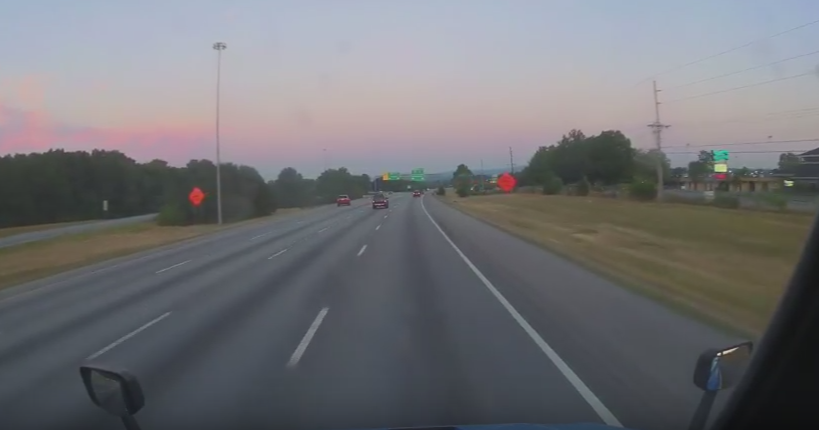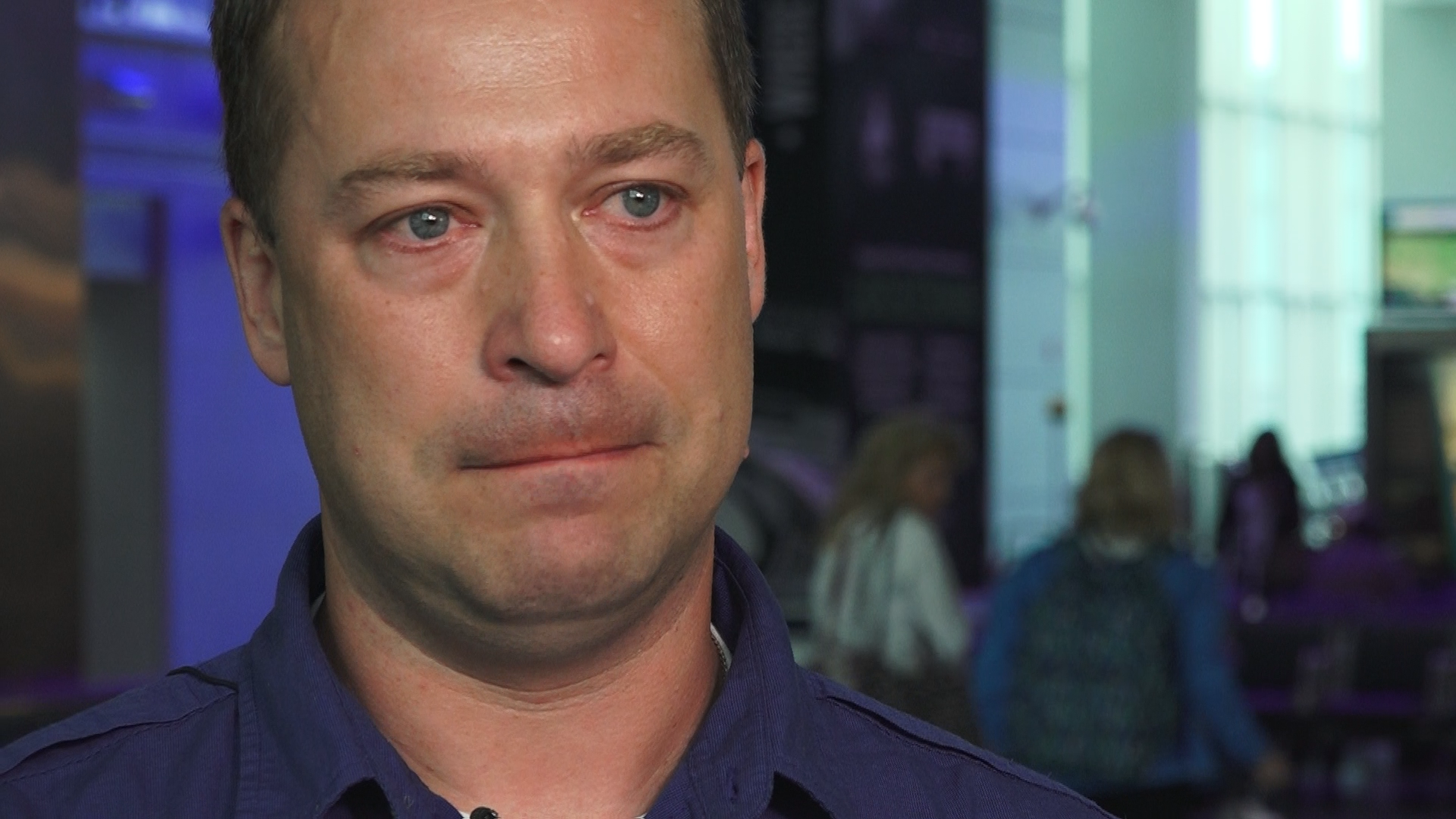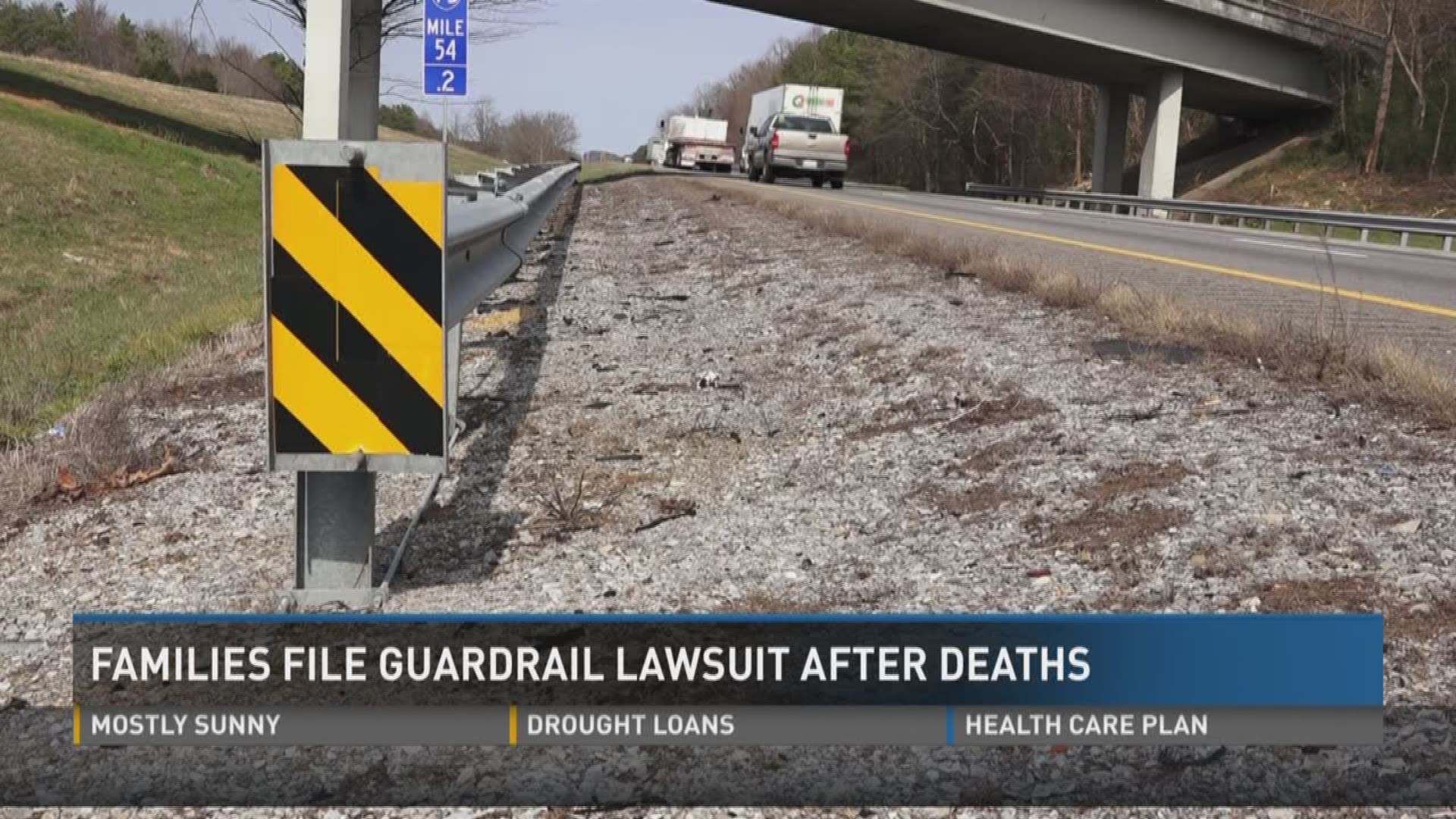The families of three people who died last year after crashing into Tennessee interstate guardrails allege the guardrails were improperly made, tested, installed and maintained.
The sweeping lawsuits have been filed in Cumberland County and in Hamilton County, where the 2016 fatal crashes occurred.
The families of Lauren Beuttel, Jacob Davison and Wilbert Byrd filed the actions close to the anniversary of the crashes.
In addition, the family of Hannah Eimers, who was killed Nov. 1, 2016, in a guardrail crash on Interstate 40 in McMinn County, is also expected to sue.
The lawsuits were announced Wednesday in a news release that included a statement by LaDeana Gambill, the mother of Lauren Beuttel.
"While nothing will bring Lauren back, my family and those of the other victims are committed to doing everything in our power to prevent these avoidable tragedies from reoccurring," Gambill's statement reads. "At the same time, the Lindsay Corporation must be held responsible for its actions, which have already claimed several lives."
The Lindsay Corp. of Omaha, Nebraska, is among the defendants.
The families seek unspecified damages.

The lawsuits focus in part on the manufacture, installation and maintenance of a device called the Lindsay X-Lite guardrail terminal.
In each of the crashes, the lawsuits allege, the guardrail terminal failed to properly telescope when the vehicles hit it. The equipment pierced the vehicles, killing the victims, the lawsuits state.
The guardrail failed to perform its intended safety function, Gambill said in an interview with NBC.
"Absolutely. Yes. I feel that if there were a different endpiece in place or no end piece, or used rubber tires, anything in place that she would have survived," Gambill said.
Victims' families allege the X-Lite is to blame for at least seven deaths: the four in Tennessee, two in Missouri and one in Virginia.
The Tennessee Department of Transportation, citing growing concerns about the device's performance, agreed in the spring to remove some 1,800 of the devices across the state.
TDOT said 112 of the 469 X-lite guardrails in TDOT Region 1, which includes several counties surrounding Knoxville, have been replaced as of June 16. Since the contracts were awarded, 427 X-lites have been replaced statewide.
The due date for the work to be completed is June 30, 2018.
Thousands of the units are used across the United States.
Davison, of North Carolina, was driving east early June 29, 2016, on Interstate 40 in Cumberland County. Beuttel was a rear passenger.
According to the Tennessee Highway Patrol, Davison fell asleep at the wheel.
The Cumberland County lawsuit states Davison's Toyota went off to the left, colliding with an X-Lite guardrail and terminal. Davison and Beuttel died after being hit by guardrail equipment that penetrated the car.
The lawsuit alleges the equipment was flawed or improperly installed.

Wilbert Byrd was riding July 2, 2016, in a westbound Ford Explorer on Interstate 75 in Hamilton County. The Ford left the highway and hit an X-Lite guardrail and terminal. Byrd was hit by guardrail equipment in the vehicle and died as a result, the Hamilton County lawsuit alleges.
"Approximately over 60 feet of guardrail pierced through the vehicle," according to the lawsuit.
Hannah Eimers died early Nov. 1, 2016, when her 2000 Volvo left northbound Interstate 75 in McMinn County and went off into the median, according to a Tennessee Highway Patrol preliminary report. Her family alleges she died from injuries suffered when guardrail equipment pierced the vehicle.

Her death gained widespread attention after TDOT mistakenly billed her family for the guardrail damage.
The family members of Beuttel and Byrd along with Steve Eimers, Hannah's father, tried without success this spring to get the Federal Highway Administration to rescind a letter of authorization clearing usage of the X-Lite, calling it "extraordinarily dangerous."
The families met with federal officials in Washington D.C. in April, but officials found "no notable concerns" with the crash tests and decided to keep the X-Lite on its approved list.
Eimers has expressed concerns with the X-Lite's original crash testing, which was performed by a company owned by Lindsay.
A 2016 report from the U.S. Government Accountability Office took issue with this practice - finding 6 of the 9 crash testing labs evaluate products tied to the parent company, calling it a "potential threat to lab independence."
Eimers has been asking Lindsay to voluntarily suspend sales pending an investigation, but the company has so far declined.

The defendants named in the lawsuits are: Valmont Industries Inc.; Valmont Highway; Armorflex International Limited; Lindsay Corp.; Lindsay Transportation Solutions Sales & Service LLC; Barrier Systems; and Cumberland Guardrail Inc.
DOCUMENT: X-Lite Federal Eligibility Letter
Lindsay previously has expressed sympathy for Eimers' death, and sent the following statement in response to the new litigation.
“For Lindsay Transportation Solutions, providing products that save lives is our top priority," the statement reads. "Any allegations questioning the safety of X-Lite are without merit. X-Lite has successfully passed crash and safety tests in accordance with federal standards and criteria, and remains qualified for use on America’s roadways. Just last month, the Federal Highway Administration examined available end terminal performance data and found no reason to conclude that the devices reviewed, including the X-Lite, are unsafe. The equipment’s inability to singly prevent every tragedy does not indicate a flaw or defect. There are a variety of factors that contribute to the severity of impact in any instance, such as excessive speed, the angle at which a vehicle makes impact, and whether the equipment was installed and maintained properly.”

